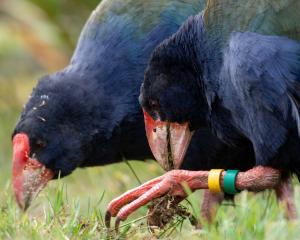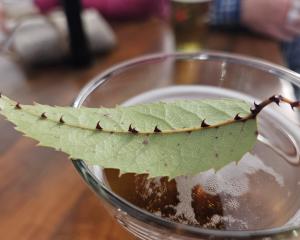
The old adage "Don’t give up your day job" doesn’t exactly apply to Southland chiropterologist (bat expert) Dr Ian Davidson-Watts who, until recently, was the Gore District Council’s regulatory and planning general manager.
In fact, the day job has now gone and night shift has begun in earnest as Dr Davidson-Watts not only manages, remotely, a bat-related ecology business in the United Kingdom, but also ventures into the darkness of Otago and Southland forests in search of his favourite mammals.
Late last year, it was the good fortune of year 4 and 5 pupils from Catlins Area School to be able to accompany him.

The project, which recently attracted a grant of $20,000 from the Government’s Participatory Science Platform arm of the Curious Minds Fund, has several dimensions to it, one of which is to take the study of bats into local schools. To this end, Gower, who hasn’t yet given up her own day job as a science communicator at the Otago Museum, has hosted weekly bat-focused classes with Catlins primary and secondary pupils, as well as supporting teaching staff to further the study with their classes.
Class activities have ranged from learning about bat ecology to enthusiastically collecting and analysing bat chatter. Having the opportunity to interact with rare nocturnal mammals that are hunting and breeding, virtually, on their doorstep, has not gone unappreciated by the children, says Gower, who often has the pleasure of watching the animated reactions of pupils analysing sound recordings and recognising bat chat for the first time.
It’s no surprise then that everyone at the Tawanui camp was eager to have a close-up look at the bats, which is where Dr Davidson-Watts was only too happy to help out with his specially designed bat-catching harp traps. Complete with speakers emitting recordings of bat chatter, the traps are designed to lure in the highly sociable and communicative bats (which chiropterologists often refer to as the "dolphins of the sky") without entangling them.
On the night of the camp, while pupils awaited the arrival of the bats, insect expert duo Gordon and Janine Thompson, from Owaka’s Earthlore Insect Park, demonstrated moth traps being used to capture (for study) the sort of prey the bats depend upon. Almost all the moths were native species and the pupils were surprised to come across many they had never seen before.

When it did, parents gathered round for a glimpse, and Dr Davidson-Watts’ and Gower’s enthusiasm was dampened only slightly by the knowledge that the long-tailed bat was a male. But while the longed-for females remained elusive, the trappers haven’t given up the search. When the "girls", as they are affectionately referred to, do show up, transponders will be fitted to the tiny mammals, and shortly after, Dr Davidson-Watts (whose passion for flying is second only to bat research) will take to the air in a friend’s microlight to track the females to their roosts.
With breeding sites identified, further protection for the long-tailed bats of the Catlins’ forests can be spurred into action, especially habitat restoration and predator control (cats, rats, stoats and possums are all capable of devouring an entire roost of bats in a single night).
And while the bat experts wait for their lucky catch, there is no doubt that a new group of young scientists is emerging from Catlins schools to take up where their mentors leave off. For as far as the kids on camp are concerned, it doesn’t matter that they were too tired to wait up for a bat catch. The moth-hunting was a buzz and the bats are still out there, waiting to be caught another night.
- Diana Noonan












